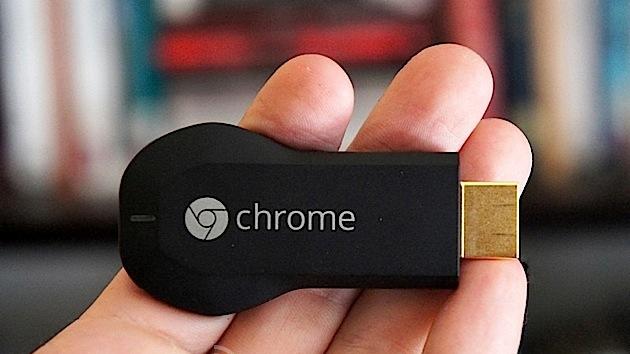ultrasonic
Latest

Tesla phasing out ultrasonic sensors as it moves toward a camera-only system
Tesla has announced that it's phasing out ultrasonic sensors (USS) used in its EVs to detect short-range obstacles.

Ultrasonic bracelet jams the microphones around you
Smart speakers and other microphone-equipped devices aren't supposed to listen all the time, but there might be a solution if you aren't willing to take any chances. University of Chicago researchers have built an experimental bracelet that uses ultrasonic broadcasts from 24 speakers to jam most microphones, no matter what direction they're in. The gadget takes advantage of non-linearities in its built-in amplifier to 'leak' ultrasonic noise into the audible range and render recordings useless.

Qualcomm's new fingerprint sensors work underwater
Hot on the heels of Apple's plans to reinvent its iPhone's fingerprint reader, Qualcomm looks set to position itself at the forefront of the fingerprint sensor market. It claims that it will be one of the first, if not the first, companies to produce under-display sensors. Unveiling its plans at Mobile World Congress Shanghai, the company revealed that its next-gen fingerprint sensors will use ultrasonic technology that can be fitted under displays, glass and metal, and can scan through OLED displays up to 1200um -- something we got to see in action for ourselves at Vivo's booth.

Vivo beats Apple to an under-display fingerprint scanner
There have been rumours of Apple exploring under-display fingerprint scanning technology, but you probably didn't expect the first of such demos to come from China. At MWC Shanghai, Qualcomm announced its latest ultrasonic fingerprint solution, with the new highlights being its integration underneath OLED displays (up to 1.2mm-thick), as well as working fine even when the device is immersed in water. As before, this tech can tolerate dirt and sweat on skin better than its capacitive counterpart, and it also works underneath metal and glass (duh) but with increased penetration -- up to 800um for glass and up to 650um for aluminum, as opposed to the old 400um for either material.

Deep learning could predict car trouble before you notice it
Trying to replicate the sounds your car is making to the mechanic you're talking to is equal parts frustrating and embarrassing. But neural networks could put your best "worn out wheel bearing" impression into retirement. Israeli company 3DSignals uses deep learning to keep track of sounds, listening for deviations from the norm in musical and mechanical acoustics. According to an interview with IEEE Spectrum, the company is in talks with "leading European automakers" to put its ultrasonic microphones in their cars.

Ultrasound can levitate large objects
Scientists have long dreamed of using acoustic levitation to float objects, but there has been one big catch: you couldn't lift an object larger than the wavelength without being picky about what you're lifting. However, it might not be a problem going forward. Researchers in Brazil and the UK have successfully levitated a polystyrene ball 3.6 times larger than the ultrasonic waves holding it up. The trick was to create a standing wave in the gap between the transducers and the object, instead of the usual pressure node between the transducer and a reflector. You can change the angle and number of transducers without messing with the effect, and it finally creates both horizontal and vertical lift -- you don't need physical support to prevent the object from drifting sideways.

British scientists create a 'tractor beam' of ultrasonic sound
A team of researchers from the Universities of Bristol and Sussex have developed the world's first functioning sonic tractor beam able to operate outside of a lab environment. The device uses 64 miniature speakers to generate high-amplitude, ultrasonic sound waves. These waves create an "acoustic hologram" (read: force field) capable of moving pea-sized objects without physically touching them. Adjusting the output of individual speakers allows the researchers to move, rotate and hold items at will.

Scientists control a worm's brain cells using sound waves
Forget using clunky headsets and implants to control brain cells... one day, you might only need to use sound waves and some chemicals. Salk Institute scientists have found a way to control the brain cells of a tiny nematode worm through ultrasound. All they need to do to trigger activity is add a membrane ion channel to a neuron cell and blast it with ultrasonic waves -- in this experiment, the researchers changed the worm's direction through sound bursts. The approach is not only relatively unintrusive, but can reach deep into the body. You could trigger neural activity without ever hooking up an electrode, even for much larger animals.

Defective Sony stereo is a fire hazard that drives your dog nuts
The Sony CMT-SX7 HiFi was supposed to be a compact, high-end sound system with multi-room capabilities and a full suite of wireless streaming standards (including AirPlay and Google Cast). Instead, it's a recalled safety hazard that doesn't play music right, makes your dog bark and threatens to catch on fire. Sony has issued an impassioned plea to stop using the stereo immediately. You probably don't have one (it's brand-new, and only available in Japan right now), but if you do, you should listen.

Your next phone could have a fingerprint reader on its screen
Security technology firm Sonavation recently unveiled a novel means of embedding an ultrasonic fingerprint reader directly into a Gorilla Glass display. With it, mobile devices would no longer need a physical button, like the iPhone's Home button, to use as a fingerprint reader. Instead, they'd be able to press anywhere on the screen, finger grease smudges allowing. Apple has reportedly been working on a similar idea, although it doesn't seem likely we'd see a buttonless iPhone for at least another year.

Parrot's new drone keeps its 'head' on straight
Drones are a seemingly everywhere at CES, but senseFly's sensor-laden eXom commercial quadcopter really caught our eye. Why's that? Well, for starters it has a self-leveling and stabilizing err... head up front. That cabeza packs one of five ultrasonic sensors, an ability to record "ultra high-res" stills, HD video and thermal data -- even simultaneously. Like the gizmo's final battery life, weight and price, however, the folks at senseFly, a division of Parrot, aren't ready to talk about exact resolution for any of the cameras. We'd imagine that since the drone's intended to look at pipelines and hydroelectric dams for cracks and defects at close proximity and with "sub-millimeter" accuracy, the imaging tools are going to be pretty powerful.

Chromecast's Guest Mode lets anyone commandeer your TV
With the number of content providers that keep coming on board with Chromecast, the next big step for Google is making the device a bit easier to use. Case in point: Today marks the launch of ultrasonic pairing -- otherwise known as "Guest mode." All you need to do is enable Google's streaming stick to connect to a nearby device and voila: Now anyone can cast to your TV from their Android, no WiFi password needed. For now, it's exclusive to Google's own OS, but there's a reason for that. Chromecast product manager Jagjit Chawla says that with iOS, you can't scan for a list of nearby WiFi access points because there isn't an API that'd allow it. Thus, Guest mode on Apple's mobile software isn't going to happen right away. "Either we can solve these tech problems, or, we can release it on Android first, gather user feedback, improve our back-end and find solutions," he said, with the goal of reaching iOS feature parity sometime later.

Scuba divers get their own underwater comms network
Most teenagers would probably tell you that they'd die if you took away nonverbal communication, but one subset of our population actually could: scuba divers. They can't exactly send texts via smartphone to one another because saltwater, and water in general, makes it hard to transmit information between dive buddies using traditional methods like electromagnetic waves and even sound waves. And as The Verge points out, hand signals only work if the other person is paying attention to you. One company, however, thinks it has the solution for scuba-lives less frightening, and no, it isn't a subaquatic version of Snapchat. Aqwary's Smart Console system uses ultrasonic hydrophones to create a local network between divers (and those in the boat on the surface), where vital data like location info, air supply status and even temperature of up to 70 divers within some 328 feet is shared automatically and viewable via a colorful OLED screen. Should the oxygen tanks run low for any of said divers, the Smart Console will send an alert to everyone in the area.

Chromecast's ultrasonic device pairing is much simpler than it sounds
It turns out that there's more than one way for guests to join in on your Chromecast party. In addition to accessing Google's streaming stick via an onscreen PIN code, friends can pair their devices to your living room entertainment setup via inaudible ultrasonic frequencies. Apparently, all one needs to do to enable this is allow the Chromecast to support nearby devices, and it'll push the necessary tones through your flat-screen's speakers, which said gizmos will receive and sync with. If it sounds simple, that's the whole point. As Gigaom tells it, Chromecast engineering manager John Affaki says that this is an effort to make using the HDMI dongle in a social setting much easier. Whether you can trust friends enough for them to not stealth-add Slayer's "Angel of Death" to the next party playlist is up to you, though.

Album of inaudible animal sounds puts you inside the head of a bat
Even with fancy Hi-Fi equipment, the weak link is often our ears and their limited 20Hz-20,000Hz hearing range. As pointed out by Motherboard, artist Jane Winderen wants you to get a feeling for what it's like to be a whale or bat with her "Out of Range" album. To do that, she used special equipment to record bat echolocation signals, marine vocalizing and other sub- and ultrasonic sounds from glaciers, oceans, and forests. From there, she slowed frequencies as high as 100KHz until they became audible, then mixed them with other exotic sounds that are within our hearing range. The end result (below) is hypnotic 40 minute recording of sounds that normally pass you right by.

Watch an ultrasonic array move objects in 3D space (video)
Ultrasonic levitation has been possible for awhile, but it's not very practical when objects must typically hover along a single axis. University of Tokyo researchers Yoichi Ochiai, Takayuki Hoshi and Jun Rekimoto have cleared this hurdle with an ultrasonic array that can push items around in 3D space. The machine creates a focal point from a three-dimensional standing wave; users just have to alter the wave's properties to move whatever is caught inside that point. The technique can manipulate a wide range of materials, and it's safe to disrupt with your hands. While the array will need to scale up before it lifts objects much larger than matchsticks or screws, it already shows that we don't need exotic technologies like tractor beams to float things through the air.

Harvard lets human minds control rats, private rodent armies remain distant (video)
Sure, we've seen rats control other rats, but that won't give us a legion of mind-controlled creatures to unleash upon an innocent public, will it? Harvard Medical School may unwittingly assist with solving our (rather misguided) plight, as it just experimented with a system that lets a human mind trigger actions in a rat's motor cortex. The test had sensor-equipped humans watch a screen that flashed in sync with their EEG brain patterns for visual stimulation; as soon their attention shifted to controlling the rat, they triggered an ultrasonic pulse that twitched the rodent's tail. There's a few problems with the implementation beyond the obvious lack of autonomy for the poor target creature, though. The rat's anaesthetized state likely affected the results, and the system isn't currently sophisticated enough to map specific thoughts to corresponding actions. The Harvard team is working to refine the technology, however, and there may be a day when we can satisfy our megalomania... or at least, put the Pied Piper on notice.

Sony patent application reimagines PlayStation Move with ultrasonic capabilities, IR emitters
A redesigned PlayStation Move? Sony's taken a stab at it before -- but this time around, it's imagining a controller with ultrasonic location analysis and Wiimote-like IR tracking. A new patent application details a "method for determining location of a controller," which proposes tracking controller depth by measuring the travel time of sound emitted from the device to the television. Two-dimensional tracking would be managed via the existing Move's visual spectrum camera, or by using a display-mounted IR emitter in conjunction with a remote mounted sensor (again, just like the Wii controller). Although not technically part of the patent, the application's attached visual aids are pretty creative too -- showcasing a completely redesigned Move wand with swappable button faceplates. One embodiment shows two Move controllers attached end-to-end, mimicking a sword, while another shows a pair side by side, linked by a full gamepad sized faceplate. One bold image shows a player with two devices strapped to his ankles, performing a backwards flip to kick a digital soccer ball -- Sony is apparently very confident about the patent's potential tracking accuracy. We'll reserve judgment until we see the technology in practice, but feel free to read the claims for yourself at the source link below, or simply mosey on past the break to see the aforementioned athlete trying to break his neck.

Alt-week 10.13.12: is the Universe a simulation, cloning dinosaurs and singing mice
Alt-week peels back the covers on some of the more curious sci-tech stories from the last seven days. Are you reading this? Seriously, are you? Sure, we know you think you are, but what if you're just a sub-feature of a complex computer program. A sprite, nothing more than the creation of software. The problem with this question is, how would you ever know? You wouldn't, right? Well, not so fast there. Turns out, maybe there is a way to unravel the matrix (if there is one). It'll come as no surprise, that this is one of the topics in this week's collection of alternative stories. Think that's all we got? Not even close. We'll explore the truth behind cloning dinosaurs, as well a rare performance by singing mice -- all before dinner. Or is it really dinner? This is alt-week.

MIT engineers use ultrasound for improved topical drug administration (video)
Ultrasound is likely most often associated with sonograms, but some MIT engineers are poised to change that. By using two separate beams of inaudible sound waves (one at low-frequency, the other high) the team were able to increase the permeability of skin, in a bid to improve the efficiency of transdermal drug delivery. The technique works thanks to the waves exciting bubbles in a fluid (such as water), forcing them to swell and move chaotically. Once the bubbles reach a certain size they implode, sucking the surrounding fluid into the void. This process creates micro-jets of liquid, which cause miniscule tears in the skin, allowing it to (painlessly) absorb chemicals more effectively. In practice, a pre-treated area of skin is then covered with a patch containing the correct dose of drugs -- but don't worry, the skin is said to grow back just a few hours later. Up until now, research into ultrasonic administration of drugs has concentrated on low-frequency waves, because the higher end of the spectrum doesn't have enough energy to pop the bubbles. Higher frequencies do, however, help create more of them and also limits their lateral movement. By using both high- and low-frequencies, the MIT engineers found this produced better over all results, by not only increasing the skin's uptake of the medicine, but also increasing the number of drugs that can be delivered this way. With pretty much anything that is usually delivered in capsule form being on the cards, this could make the administration of many popular drugs much more convenient and / or effective. Also excellent news for those who really don't like needles.







